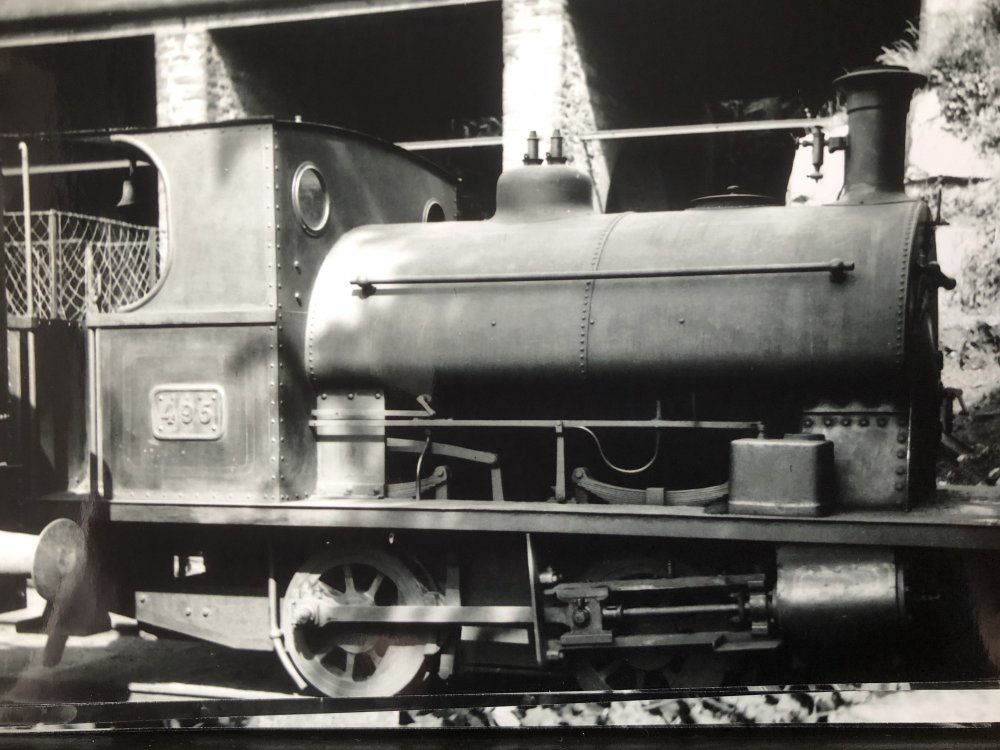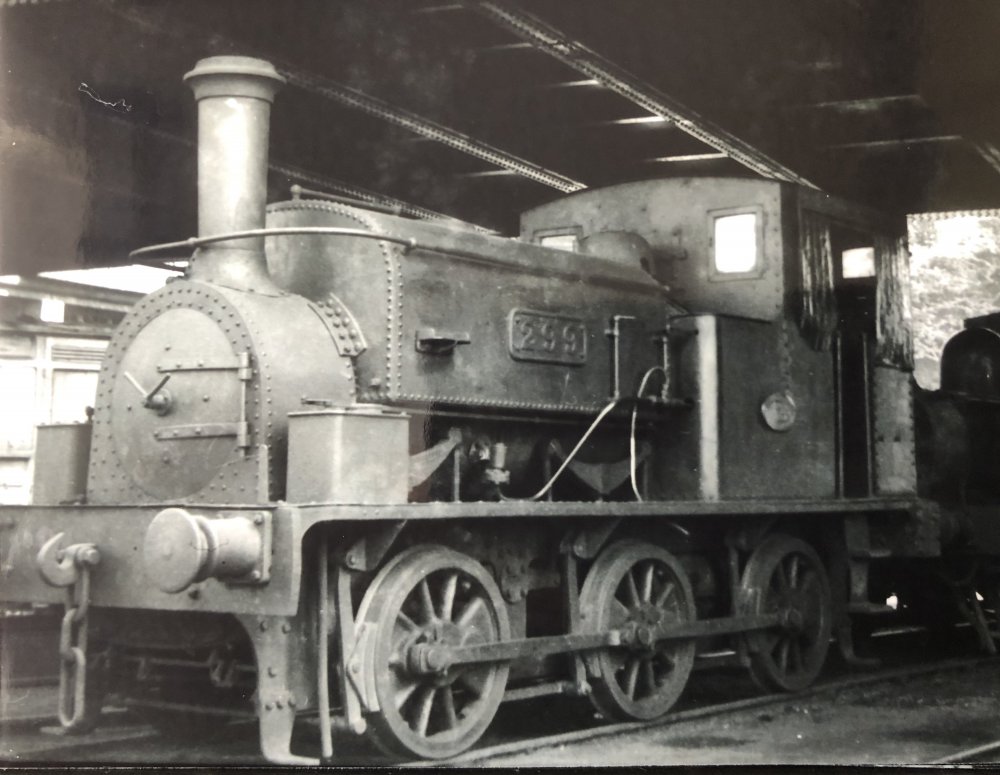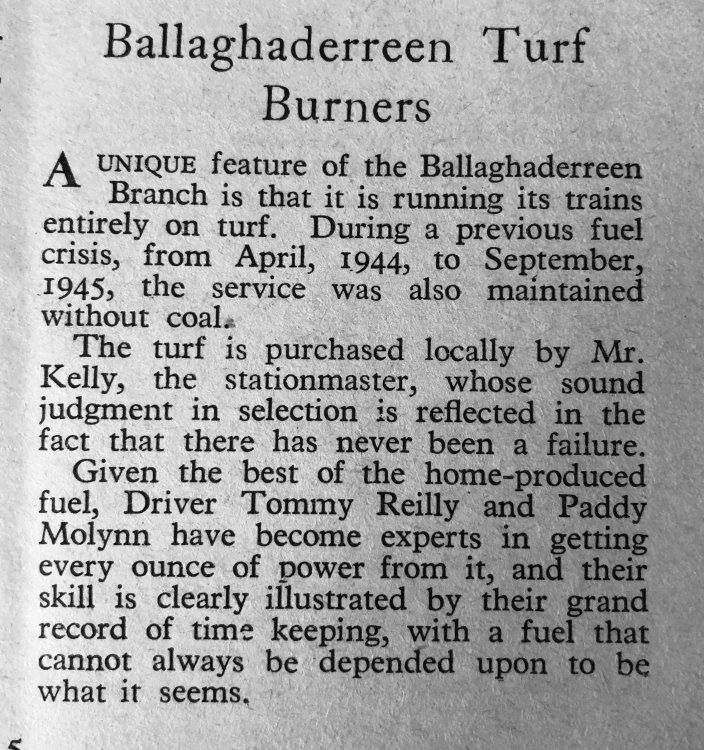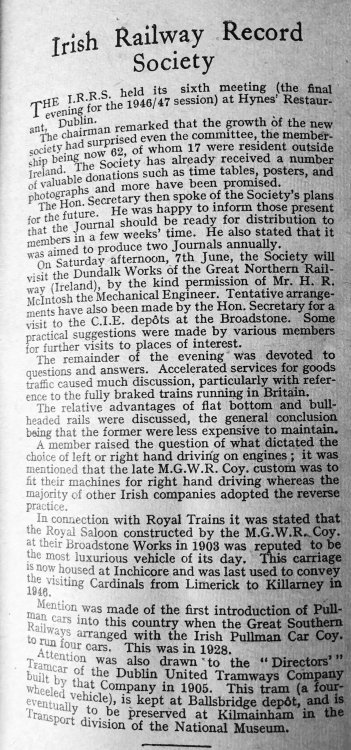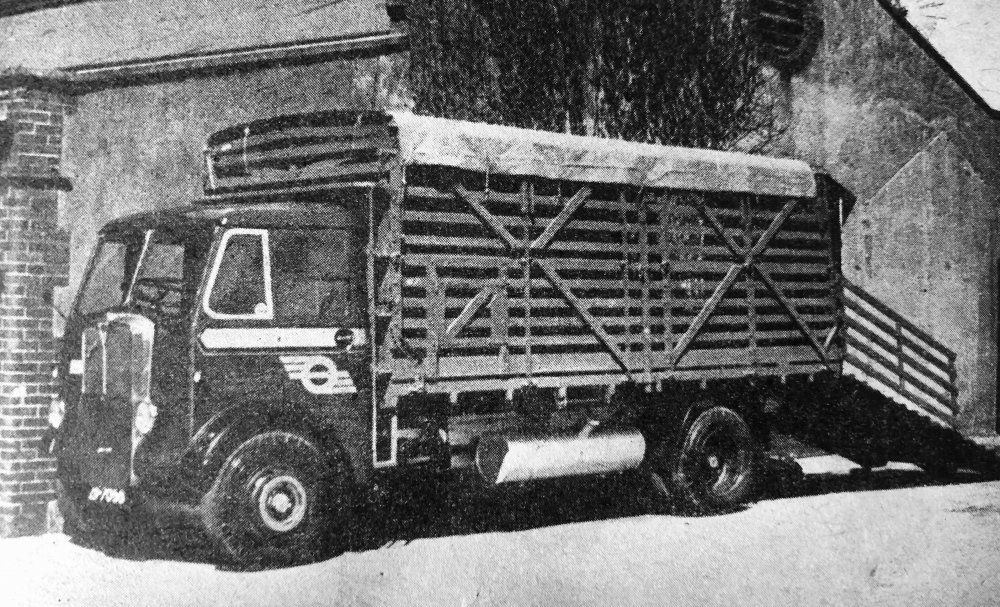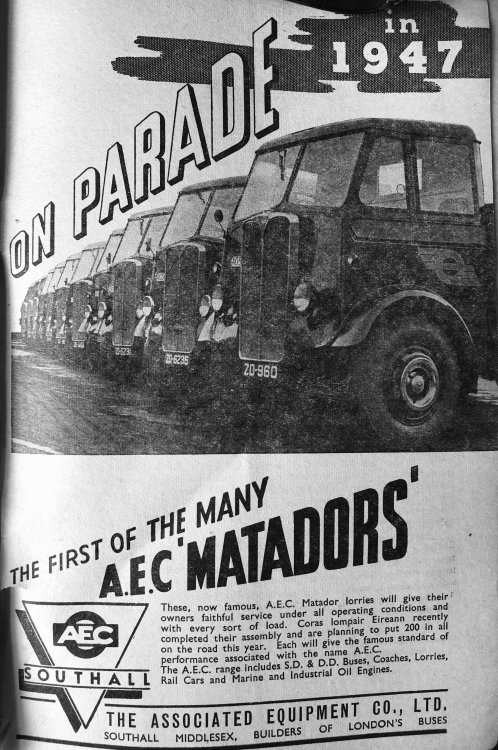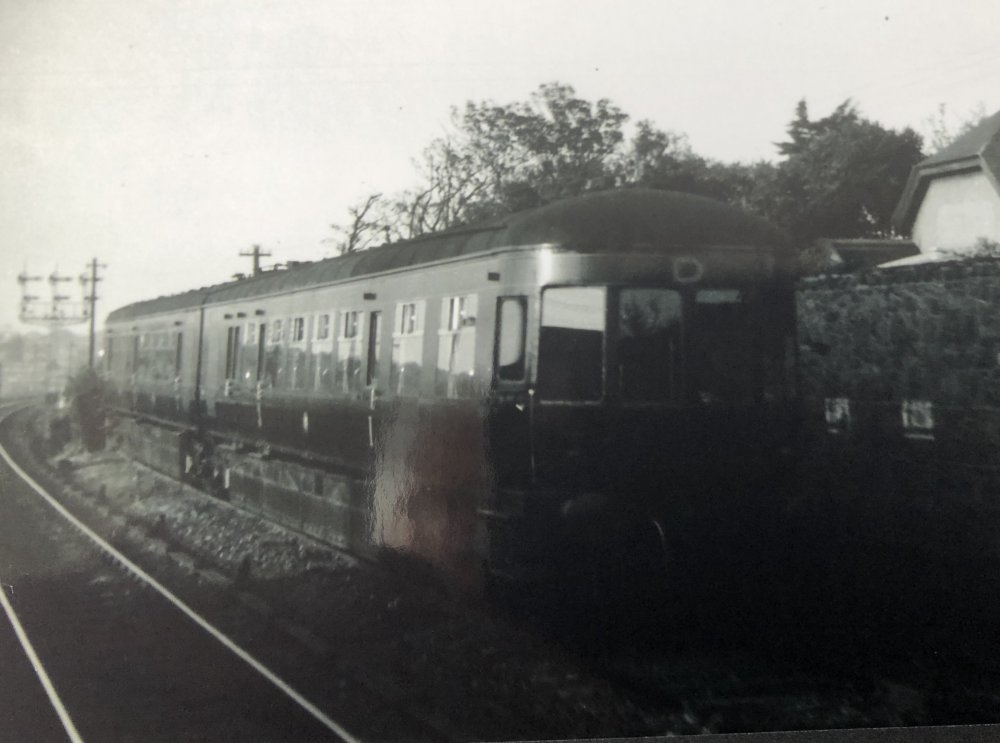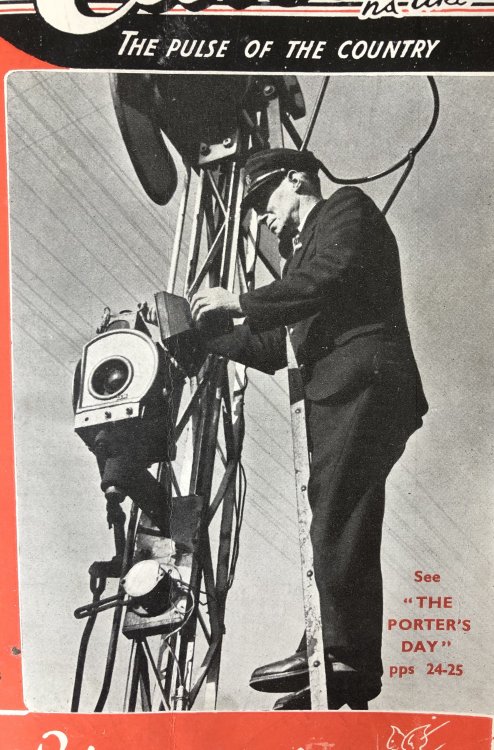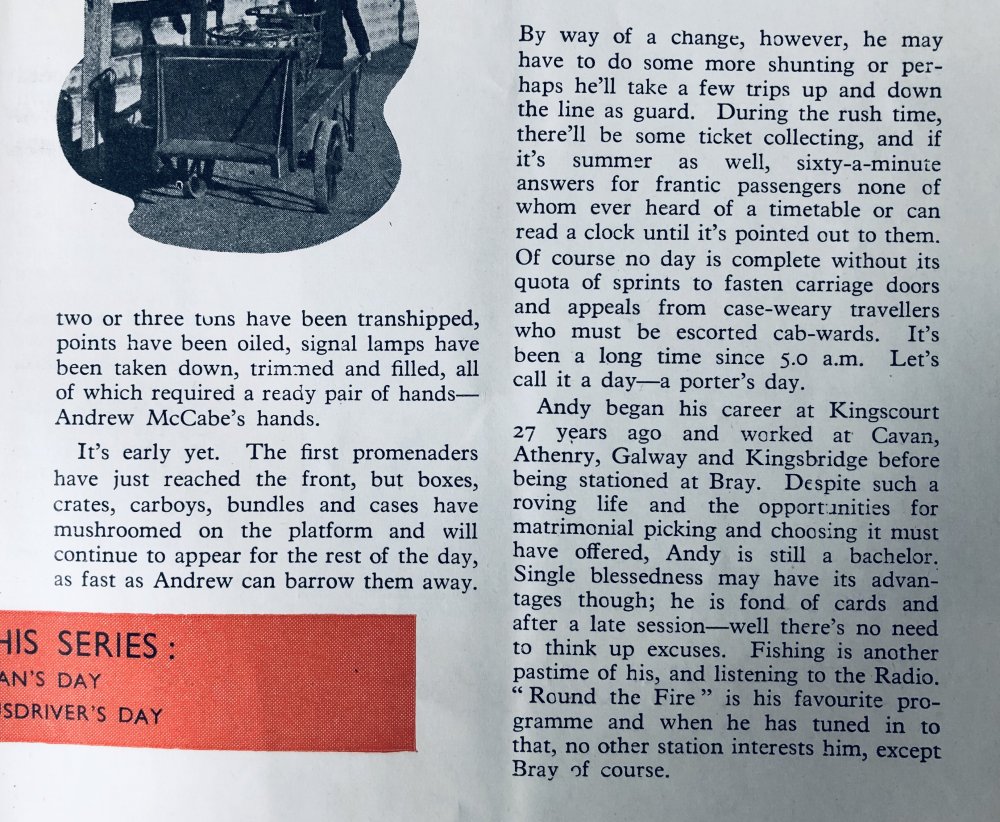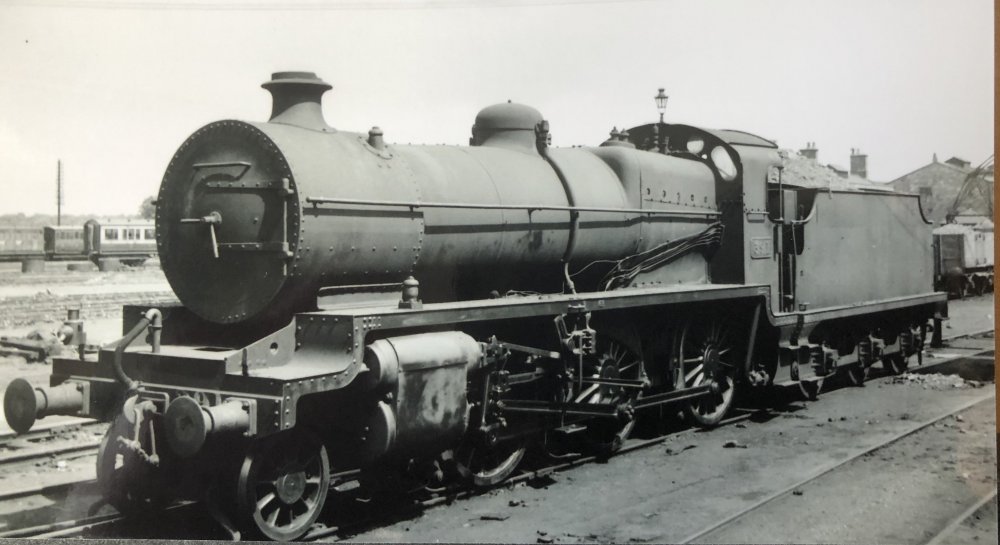-
Posts
15,897 -
Joined
-
Last visited
-
Days Won
394
Content Type
Profiles
Forums
Events
Gallery
Blogs
Community Map
Everything posted by jhb171achill
-
And the LBSC was, of course, just narrow gauge......................................
-
Those look great! 1970s heaven...
-
They had inherited a large fleet in 1925, which was more than adequate for most of the largely rural traffic. With the growth of road traffic and the depression-era of the 1930s (which we are likely to be seeing again, nowadays!), money for large scale replacement wasn't there - it had to be "make do and mend"!
-
Here's a loco kit which, while not of Hunslet parentage, could be adapted to make a good representation of 299. http://www.modelrailways.tv/
-
MORE LOCOMOTIVES FROM WEST CORK These were also taken in the late 1930s, again at “Rocksavage”. 495 had started life as a private-owner industrial, too, at Allman’s Distillery in Bandon. Despite coming into GSR stock, she remained in her maker’s “shop shelf” lined dark green until scrapping, a highly unusual exception to the universal grey. The GSR numberplate is non-standard in pattern. I suspect it was locally cast. I doubt if it ever left Cork - a visit, ever, to Inchicore or Limerick would have seen it sheep-dipped in grey paint, for sure. GSWR No. 37 was a regular in West Cork for a number of years, as were several others of the class. They acquitted themselves very well on the main line to Skibbereen, as well as elsewhere. A steam-era layout in West Cork would need one of these and a Bandon tank in the same way that a 1970s layout would need at least one 141 and “A”.
-
I'm unaware of that, Garfield, but pictures of all three when working can be seen in "Rails Through North Kerry", page3 112-4. On P112, one is in steam. I am unsure of whether the other two were still in working order at that time. On a related note, several Belfast Dock steam cranes survive. There were, I think, three in Kelly's Coal Yard, where the GNR, NCC and BCDR used to get their coal from. At least two survive, and an inspection of them found at least one to be in reasonably mechanical order about twenty years ago. Very much restorable....
-
OK, I've counted. I think it's "1"..... .......can't wait for the next one!!!! :-) :-) Hmmmm....cabin fever......
-
Wonder what happened the plates off it? Looking at Senior's picture and the 1957 one.... it seems to have had sheets of corrugated iron as shelter for crews earlier on, but by 1957 it has a single light steel sheet..... The winds in West Kerry out on Fenit Pier on a winter night would be vicious, indeed.
-
I had always wondered ( It’s a perfect beast for a shunting layout. I’d be extremely tempted myself if there’s a kit of something similar out there. Given it’s “industrial” origin, and the position of the wheels vis a vis the loading gauge dimensions, I often wondered if (like a number of Irish “industrials”), it was an off-the-shelf British engine re-gauged.
-
Brilliant, Ernie, there’s an explanation for that! Yes, I would suspect it could have been an “unofficial” name!
-
Albert Quay, c.1938. Senior was out and about gricing... No. 299 hides under the oddly-named “Rocksavage” loco “depot” bridge. There’s no place called “Rocksavage”, and I have often wondered where this name originated. Anyone know? This would appear to the only picture on this visit, which may have been one of the two times he went to Macroom. An engine like this would be ideal for Downpatrick today.
-
Cuisle na Tíre (“Ireland’s Transport Magazine”)
jhb171achill replied to jhb171achill's topic in General Chat
-
MD220 - superb info on that pic, thanks! All - the track plans on OS maps often omitted points and crossovers. I saw one, one time of Strabane which didn't show the Letterkenny line as being connected to the rest at all. The absence of a suitable crossover in the above doesn't mean it wasn't there - it had to be. But as others have already said, there were no turnout up against the buffers - just the four parallel track we all remember. By the way, the singling of much of the Midland was in 1928, but Sligo to near Collooney was double tracked until the SLNCR closed. Latterly I think it was Sligo - Ballysodare.
-
Road Vehicles of the 1950-60 Period
jhb171achill replied to Colin R's topic in Trucks, Vans and cars
CIE road vehicles as new in 1947 - Essential for model goods yards! Cabs CIE green with light green stripe & “snail” logo - body wagon grey. -
Yes, that's what I remember.... I don't remember any actual pilot loco there and I doubt if there had ever been, certainly since Midland days anyway if at all. I daresay that in steam days there might have been a loco to shunt the quays, but only a guess. In more recent times, it was the train loco. (The story causes me to recall my first ever trip by train to Sligo - in those days it was laminates, including a dining car. There was an oul guy in it who was a bit gargled, let's say, and any time the guard / ticket checker passed him, the two would get into a heated argument!) Wow!! That's exactly what it was a reference to - that would make an interesting display nowadays!
-
Steam days also had the unnumbered one-offs that were the shunters in Kingsbridge and Waterford: Sambo* and Jumbo**, and of course the oddball "Pat" on the coal gantry in Cork. One wonders what the PC and Easily-Offended-Brigade would make of such names today! * = racist, and ** = oooohhhh, "body shaming"! Times change, folks, don't they, as Tempus tends to Fugit itself away........ In the 1950s and 60s, York Road and eventually Grosvenor Road in Belfast had the unique BCDR bogie diesel and several one-off NCC diesel shunters; this family an interesting subject in their own right. I think I've already posted a pic of the BCDR one somewhere.... that in itself is surprising, as Senior rarely took pictures of anything without a firebox and boiler tubes!
-
Exactly, yes. I remember that one well, travelled in it too......111 and I think also 113 were the only ones I recall in that short-lived blue and cream.
-
Ah! Many thanks, Galteemore. I was unaware of that - it's an excellent design. You're absolutely right, NIR; this "Minories" thing accrding to that article above was in 1957. Fry had his "Cyprana" up and running over ten years at this stage. However.... with Fry's contributions to the RM quite often at that stage, the two would have known each other very well. Is it possible that Freezer based his "Minories" on an idea of Fry's? My thoughts exactly!
-
-
There was some sort of loop at Sligo, as RPSI trains were always able to run round. It was a bit further out. In Ireland “pilot” engines were just spare ones, probably having brought the previous train in. Dublin used the “E” class, of course, and I remember seeing those (well, one) at Limerick in the 1970s. Cork had “E”s too at one time, but I think they ended up all going back to Dublin as I never saw a single one there in the ‘70s. From the mid 1980s onwards, any pilots you saw anywhere were inevitably 141s or 181s. By this stage, all 121s were almost always one half of a “pair”, either paired with one of their own, or a 141 or 181.
-
I’ve already posted some items from this, which was published in earlier CIE days. While it aimed at the public rather than enthusiasts, it contains much of interest. The following is from June 1947. The article about a railway porters day at work is an interesting insight into a long-gone world, but one familiar to anyone who worked on the railways that SO many layouts depict.
-
-
I always thought the W & T would make a superb model. You wouldn't need much space. you would not need point-rodding or signalling, let alone a cabin. You could do its entire history with half a dozen ancient (albeit necessarily scratchbuilt) carriages, a 2.2.2T, their 0.4.2T, a Midland "J26" (555), and a pair of AEC railcars and a Park Royal to go in between. That's it. Convincing. I'm sure it could have an update - had it survived, the AECs would have seen out the 1960s and mid 70s, and from then till the mid 90s they'd probably have shipped in a re-engine "C" and made the railcars push-pull. Not much variety, but it was isolated. Since the, the sole stock on the whole line would inevitably be two 2-car 2600s. Nice idea for a "shelf" layout; Tramore in 2020..... In this day and age, the track plan would have a single turnout at Waterford, leading to a shed, and nothing at Tramore, I am sure!
.png.c363cdf5c3fb7955cd92a55eb6dbbae0.png)



